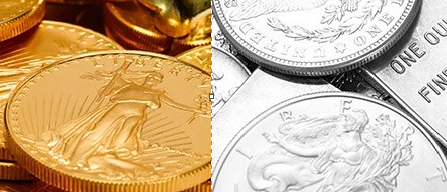
The Gold Silver Ratio Breaks 80:1
The Gold Silver Ratio Approaches a Ten Year High
The gold silver ratio measures the number of silver ounces it takes to purchase an ounce of gold. With the closing price of silver at $14.67 an ounce and gold at $1221.80 per ounce on Friday, February 26, 2016, the gold silver ratio was 83.20 to 1. The gold silver ratio has not been this high since it hit 84:1 in late 2008 during the financial crisis of that year.
The gold silver ratio was about 70-72:1 in February 2015 and about 35-40:1 in February 2011.
Gold and silver have risen sharply this year on global financial uncertainty. Gold, however, has risen more on a percentage basis than silver, resulting in the increase in the gold silver ratio.
Silver Bugs vs. Gold Bugs
While most gold bugs are silver bugs and vice versa, some precious metals investors are either gold bugs or silver bugs. Gold only gold bugs tend to believe that only gold is money and that the great difference in the value of the two metals is justified. Silver bugs believe that silver is money and has been money longer than gold and that the high gold silver ratio highlights the undervalued nature of silver vs. gold.
Who is Correct – Gold Bugs or Silver Bugs?
The Gold Bug Argument For a Higher Gold Silver Ratio
The ‘historic’ gold silver ratio is about 16:1 based on the ratio of silver’s abundance in the earth’s crust compared to gold. Gold bugs dismiss the ratio as not entirely relevant. Gold and silver, they argue, have different uses and therefore different levels of demand. An analysis of the gold platinum ratio is instructive. Platinum is about ten times rarer than gold but its price is not ten times higher. Indeed, the price of platinum closed lower than gold on Friday February 26, 2016. Platinum closed at $913.00 while gold closed at $1221.80 an ounce.
Platinum has almost no history as a monetary metal other than for the production of some platinum coins in Russia in the 19th century. Platinum’s uses are industrial and ornamental and gold bugs would argue therefore there is no monetary premium enjoyed by platinum, despite its rarety.
Because central banks hold gold as reserves, but do not hold silver, gold bugs argue that only gold is money and is the monetary metal. Gold bugs consider gold a safe haven and exclusively an ornamental and monetary metal, while silver is an industrial and ornamental metal that is no longer used as money. The silver market is tiny compared to the gold market, so it attracts less institutional capital. Gold bugs view silver as the “poor man’s” gold which rightfully trades at a lower multiple to gold. Historically, the price of gold has been far less volatile than silver thus anchoring its safe haven status in the mind of gold bugs.
The Silver Bug Argument For a Lower Gold Silver Ratio
Silver only silver bugs argue that industrial silver demand is a feature not a bug that should add to its monetary value. Because silver used in industry is effectively consumed and for the most part not recycled, there is less silver available to satisfy investment needs. Since industrial demand for silver is more than 50% of overall demand, and that demand is satisfied mostly from annually mining supply, half of annual production is not available for investment!
In recent years the amount of silver coins sold has exceeded the amount of gold coins sold by a wide margin. The U.S. Mint sold over 100 times more one ounce American Silver Eagle coins than one ounce American Gold Eagle coins in each of 2014 and 2015.
Silver bugs point to decreasing supply and increasing demand as a reason the gold silver ratio should be far lower. Indeed, the Silver Institute has estimated that the silver supply demand dynamic has been in deficit for many years.
That there are no significant readily accessible stockpiles of silver as there are gold stockpiles, is also a feature not bug, silver bugs contend. Because silver demand is satisfied mostly from annual mining supply vs. gold whose demand is satisfied from a combination of annnual mining supply and existing gold stockpiles, the lack of silver stockpiles can place a strain on silver supply that might cause a silver shortage and an attendant price increase if demand continues to increase.
Silver bugs view burgeoning industrial silver demand required to power solar energy and electronics and computer devices in an increasingly wired world and increasing investment demand as complimentary forces that work in tandem to place excessive strain on the ability of primary and secondary silver miners to keep up with demand.
While silver bugs don’t argue that silver should be worth as much as gold, they think that the current gold silver ratio of over 80:1 is unjustified given silver’s increasing demand as an industrial and investment metal.
All Blog Articles are provided by a third party and do not necessarily reflect the explicit views of BGASC, nor should they be construed as financial advice.
